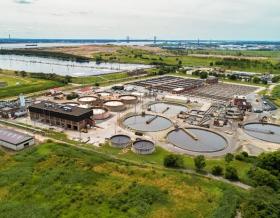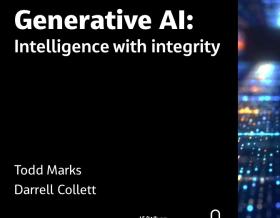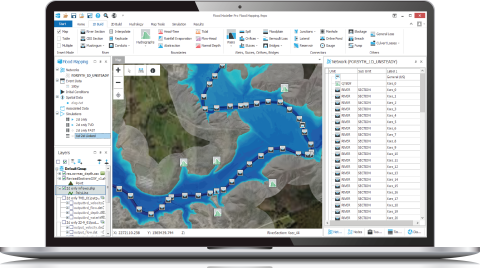




At Jacobs, we're challenging today to reinvent tomorrow by solving the world's most critical problems for thriving cities, resilient environments, mission-critical outcomes, operational advancement, scientific discovery and cutting-edge manufacturing, turning abstract ideas into realities that transform the world for good. With approximately $16 billion in annual revenue and a talent force of more than 60,000, Jacobs provides a full spectrum of professional services including consulting, technical, scientific and project delivery for the government and private sector.



As a purpose-led company, we know we have a pivotal role to play in addressing the climate emergency. We consider this not only good business, but our duty to channel our technology-enabled expertise and capabilities toward benefitting people and the planet.



For more than 70 years, our teams have provided integrated solutions to help solve the most complex and hazardous challenges of space exploration. We invent by imagining what’s possible.



Sit down with our visionary team of thinkers, dreamers and doers to see what a day in the life is like.



For more than 30 years, Jacobs has been responsible for planning and implementing Lead and Copper Rule-related strategies which protect millions of people in the U.S. and Canada. Our work includes enhanced water quality monitoring strategies, sampling plan development, harvested pipe-scale analysis, lead service line inventories and replacement plans, corrosion control studies and the incorporation of equity and environmental justice considerations into compliance programs.



Jacobs. A world where you can.



As our clients navigate the digital transformation and growing cyber risks, we have positioned ourselves at the forefront of this growth, adding digital capabilities, products and tools to serve a growing set of customers.



Jacobs is working to help clients across the United States secure federal funding for projects that make our cities and communities more connected and sustainable. Working hand-in-hand with clients from coast to coast and everywhere in between, Jacobs develops bold, innovative solutions to address the nation’s toughest challenges.



A curated selection of some of the top-listened to and trending podcast episodes from our popular If/When podcast series, which has over 4M downloads to date.



Now more than ever, we appreciate the hard work, sacrifice and dedication of the medical profession in ensuring the health and safety of our communities.



Together, we are stronger. Together, we can transform the future.



Together with our visionary partner, PA Consulting, we're establishing our position in high end advisory services, creating a springboard to expand in high value offerings beyond the core.



We work in partnership, delivering some of the most challenging, diverse and innovative projects and programs globally across multiple sectors. We integrate complex interfaces across planning, procurement and delivery to help unlock better social, environmental and economic outcomes from mega and giga projects.



We’ve provided design-build services to the water sector for over 25 years and delivered more than 150 projects. We offer fully integrated design-build and design-build-operate capabilities to tackle the most complex water challenges and work in close collaboration with our clients.



As climate change threatens water security around the world, more communities are turning to water reuse as a resilient water supply solution and embracing the OneWater principle that all water has value. Jacobs has been supporting clients with water reuse programs for decades, beginning with the first applications of advanced wastewater treatment technologies in the 1960s. We provide our clients with a full range of services, from water reuse feasibility studies to design, construction and operations.



Jacobs’ deep experience with advanced technology systems and our wide-ranging program support capabilities make us a premier partner at locations across the world. We deliver the right talent, tools and processes to support and enable our customers’ missions.



The National Air and Space Museum's One World Connected exhibit will tell the story of how flight fostered two momentous changes in everyday life: the ease in making connections across vast distances and a new perspective of Earth as humanity’s home. Below are some stories from Jacobs that also highlight the connections and digital solutions we are making around the world.



Stories that capture our partnerships and innovative impact for a more connected, sustainable world



The only certainty about the future is uncertainty. Resilience is an attribute of a smarter planet, and requires planning and adapting ahead of potential threats. We help our clients survive, recover, adapt and thrive.



With flooding being a concern for most places on earth and flood frequency predicted to increase across 42% of Earth’s land regions by the end of the century, integrated catchment modelling is a key element of most flood risk management responses.
Computational flood modelling has been in use for more than 50 years. Historically, flood modelling would only assess the impacts of flooding from river systems. This resulted in the misrepresentation of flood risk as the link between surface and subsurface flows wasn’t considered.
An unrealistic assessment of flood risk can lead to catastrophic consequences that could cost significant amounts in terms of infrastructure, but also lives.
With technological advancements, this understanding of how different flood mechanisms affect the whole catchment has evolved.
What if we showed you how Flood Modeller, our industry-leading river, floodplain and urban drainage modelling software, offers an integrated catchment modelling solution, all within a single environment?
in flood damage annually around the world
increase in flood frequency predicted by 2100
“Urban areas worldwide are seeing an increased frequency of extreme, high-intensity storm events that cause severe flooding. Historic practices of filling natural waterways have reduced overland flow opportunities and increased the risk to public health and safety. Integrated catchment modelling allows engineers to understand surface flow dynamics and enables visualization techniques for a wide audience “see” the problem. This enables collaborative planning and design of resilient blue-green flood mitigation solutions that work with the neighborhood fabric.”
Elise Ibendahl
Jacobs Flood Modelling & Planning Global Technology Leader

An inside look at the Flood Modeller program

An aerial view of the City of Colorado Springs
The rapid growth of urbanization over the years has led to building homes, businesses and infrastructures on floodplains. More frequent intense rainfall events, as a result of climate change, has led to many existing urban drainage systems exceeding their capacity. It is paramount to be able to quickly and accurately understand the risks and implement the appropriate response measures.
Whether it is to build flood defence infrastructure to avoid or redirect flooding in the first place or put in place adequate emergency plans to evacuate residents and protect infrastructure, flood modelling is the first point of call and it needs to be fast, comprehensive and accurate.
With over 40 years of dedicated development, Jacobs’ Flood Modeller software provides a fully integrated 1D and 2D modelling solution which transforms the way we undertake flood risk modelling.
The industry-leading river, floodplain and urban drainage modelling software, provides a wide-range of features and capabilities to better understand flood risk in urban areas.
Flood Modeller’s fast and robust solvers provide a fully integrated solution where you can model channels using the 1D river solver, or its 2D solver to model surface water flow, while linking to the 1D urban solver to model the interaction with and the impact on the drainage network. You can also input hydrological data, to account for different return period events and climate change scenarios. Such a comprehensive solution means that many factors can be considered when carrying out a flood management study hence optimising decision making and improving the protection of our communities.
Subjected to extensive testing and benchmarking exercises, Flood Modeller offers a cost-effective solution trusted by many local authorities, government agencies, engineering consultants and insurance companies around the world.
We used Jacobs’ Flood Modeller 1D urban solver to model the Little Shooks Run drainage basin within the City of Colorado Springs, allowing us to not only model flood water on the surface but also to dynamically link to the subsurface drainage system beneath. Doing so meant that water could dynamically flow between the surface and subsurface during a simulation.
Linking the 1D urban solver to Flood Modeller’s 2D solver allowed us to better understand the uncertainty of surface flow patterns in the sub-basin once the drainage system capacity is exceeded. The solvers also made it possible to compare the existing inlet capacity to the overland street conveyance to understand when different locations became at risk of flooding.
We then used the model to understand how blockages in a culvert within the sub-drainage basin reduced the capacity of the local system, leading to water being discharged onto the surface upstream. The model showed how in some locations, water was then able to flow overland and back into the drainage system downstream of the blockage, while in other locations water leaving sub-drainage system ponded and could not re-enter the system. The linked model provided vital understandings into how the subsurface drainage basin influenced the surface water conveyance of flood waters.
Next, we applied to test the impact of a range of potential solutions to reduce flooding on the surface, such as incorporating additional inlets into the drainage system, adding storage facilities and increasing pipe capacity. The result was a set of possible approaches that could be adopted by city officials and planners to reduce flood risk arising from intense thunderstorm events in the Little Shooks Run drainage basin.

Flood Modeller is an industry-leading flood modeling software which enables engineers and scientists to deliver faster and more accurate results by simplifying the modelling of river, surface water, and urban drainage systems, and removes the need to use other software.

As the world is experiencing more severe weather events, communities need to make long-term preparations. In this episode of Inflection Points, Bryan Harvey, Jacobs' Vice President and Head of Major Programs and Projects Group, EMEA, talks about how the number and severity of floods and droughts around the world are encouraging new ways of planning to mitigate the impacts.

Jacobs was selected by England's Environment Agency to design, develop and implement the National Flood Risk Assessment 2 (NaFRA2), a pioneering cloud computing system that will help create a step-change in the quality and scope of England's national flood risk information.

The frequency and intensity of urban flooding has had devastating impacts on exposed communities across the globe, from the economic cost of damage and disruption, to mental and physical health and displacement. The challenge in managing this hazard is complicated as the cause of floods is often poorly understood and mitigation can be secondary to water quality considerations for sewer programs. However, by taking a holistic approach to understanding the causes and developing solutions, mitigating urban flooding presents opportunities to deliver improvements to neighborhoods and communities. This webinar examines the causes of urban flooding, the opportunities available from a proactive approach to mitigation and the importance of community engagement in understanding the problem and developing solutions.